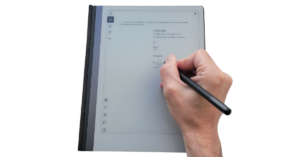Every supercommuter is, by definition, a professional traveler, and likely has a good set of tools for optimizing flights. If you work in one city and live in another, you may go back and forth somewhere between 4 and 50 times a year.
But, unless your employer pays for the bulk of your travel, flight costs can be a major part of the cost of being a supercommuter. There are many ways to cut these costs, often by incurring a different set of costs on second-tier airlines, or by making your trip less comfortable and more difficult. Giving up good seats or miles, or adding legs to trips can be hard to justify.
This article details 3 strategies for an airline plan that can keep you flying first tier airlines, where you probably have status and an airline credit card. You don’t want to give up expedited boarding, free checked bags and the seats of your choice, by taking a cheap “basic” fare or a discount airline.
Here are some strategies that you probably know, but unless you put them together in a plan, you probably are not taking full advantage of the way they work together.
1. Book Early and Often
Set an airline travel budget for 6 months, and spend it all up-front.
Here’s an example – in January, set your budget for March to September. For illustration, set your budget at $100 per one-way flight. This puts you at $1,200 for monthly trips over a 6-month period.
Then pick approximate dates for your travel. These don’t have to be exact, but pick possible or likely dates.
Put all of your dates into a fare tracking tool (see number 2 below). Buy regular economy tickets (not basic economy) whenever prices hit the $100 target range, securing these low fares early. Don’t worry about the flight times or getting your exact preferred flight – just pick flights that are within about 18 hours of when you think you would want to fly.
In some cases, you may want to book more than one flight for the same trip – when you have alternative plans that may or may not involve a weekend, for example. Once you’ve set your budget, don’t be afraid to have 10+ future trips booked, some of which you will use and some of which you will not.
The key is that, with the major airlines that offer flight credits, you can cancel any of these flights and redeploy the flight credits on other possible future flights. Once you’ve given your budgeted funds to the airline, you will have many ways to switch between credits and placeholder flights. As long as you are comfortable managing all your placeholder flights and credits, you do not need refundable fares. Your credits will all be put to good use.
2. Use a Fare Tracking Platform
Pick one or more platforms to track fares. Put all of your contingency flights into the platform’s fare tracking (and notification) system. Some of the specific information you put into the tracker is very important. If direct flights are available, you will want to pick only direct flights. You should pick only the first tier airlines that you want to fly or where you have status. Worry less about flight times.
There are some problems with many fare tracking platforms that can waste your time. Chief among these are basic fares – if you set a fare tracker but don’t exclude basic fares, you will get many false notices regarding price drops.
With some platforms and some airlines, you can make selections that serve as a proxy for excluding basic fares. For example, if you use Google Flights, selecting one carry-on bag for a domestic United flight will exclude basic fares. Unfortunately, the same filter does not work on American through Google. If you want to search both airlines, but you are excluding basic fares for only one, you will get many false alerts and comparisons.
Expedia (#ad) offers the alternative to filter based on whether a reservation allows for a seat choice. This works better as among multiple airlines. Most other platforms do not offer this.
Even after you have booked flights, there are advantages to continued tracking. You can often get credits when prices drop, either through the airline (as described in 3 below), or through a service offered by a booking and tracking platform like Expedia (#ad).
3. Change, Change, Change
Once you have placeholders, credits and fare tracking in place, the ability to make changes and cancel flights at no additional cost becomes very valuable.
(A) Changes to Build Credits:
After booking, keep an eye on your tracked flights. If you notice a fare decrease below what you paid, you can often switch to a cheaper flight and put a credit in your account. In some cases, you can even switch back into the same flight at a lower cost – you may be able to switch into another flight at no cost, and then back into your original flight with a credit.
(B) Changes for Better Schedules:
If you notice that fares for flights with more convenient times drop to the price you paid for less convenient options, don’t hesitate to change your booking. While flight times are often not as important as the fares (because of the 24-hour change feature discussed below), you should never pass up a good fare on a flight at your preferred time.
(C) Last-Minute Changes:
First-tier airlines generally allow you to switch flights, during check-in, within 24 hours before your scheduled flight. You are then often able to choose another flight, within 24 hours of when you check in, at no additional cost. This can result in enormous savings.
Combining early booking of cheap fares and 24-hour changes can make $100 (or very low) fares for almost any domestic major route realistic.
Of course these strategies involve risks, particularly on heavy travel days, or days when the weather interferes. But we’ve found that 80-90% of the time, you can pay around $100 for a major route, and still get the optimal flight, keep priority boarding, good seats, and baggage privileges.
Supercommuting at Half the Cost
The plan above demands attention and flexibility, but the cost savings can be dramatic. If you are a quarterly commuter, you may pay $800 – $1,000 for good flights. Without a plan, you are more likely to pay $2,000 – $2,500.
If you are a weekly commuter, you could pay $10,000 for good flights using this plan, as compared to $25,000 without the plan.
Every supercommuter’s tolerance for detail and desire to optimize differs, but for many, using an airline plan like this can really pay off.
Add this to your Anywhere Plan!
Note – we have an affiliate relationship with Expedia and may earn commissions from actions you take on this page.




